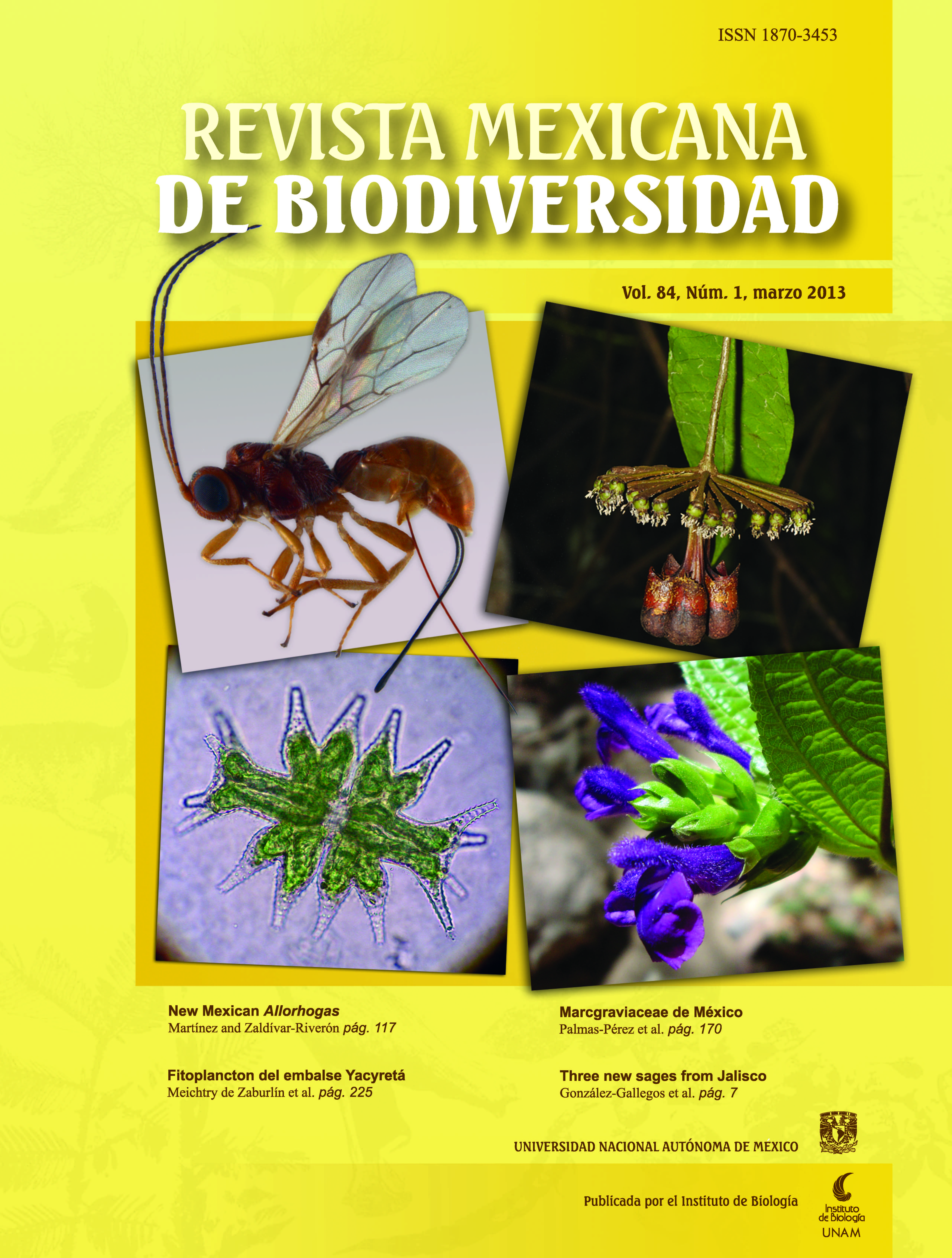The biological and reproductive parameters of the invasive armored catfish Pterygoplichthys disjunctivus from Adolfo López Mateos El Infiernillo Reservoir, Michoacán-Guerrero, Mexico
DOI:
https://doi.org/10.7550/rmb.26091Palabras clave:
Loricariidae, plecos, invasive species, control strategyResumen
Invasive Pterygoplichthys disjunctivus (Weber, 1991) (synonymy: Liposarcus multiradiatus) armored catfishwere first reported in Mexico in 1995 and have spread successfully in several aquatic ecosystems. In Adolfo López
Mateos El Infiernillo Reservoir, Michoacán – Guerrero, the population of this armored catfish is growing substantially
because natural predators are not present and exploitation by humans does not occur. Over a complete annual cycle,
we studied the following population parameters: weight, total and standard length, the relationship of weight to total
length, the hepatosomatic (HSI) and gonadosomatic (GSI) indices, total fecundity (TF) and relative fecundity (RF). The
average total (TL) and standard lengths (SL) were 248 ± 37.5 and 188 ± 30.7 mm, respectively, and the average weight
(W) was 135.3± 66.8 g. The largest fish reported was 520 mm in TL and weighed 1 280 g. The species showed an
extended reproductive season from May to November, as indicated by the GSI, TF and RF. The strongest reproductive
peak occurred from July through October. During the annual cycle, the highest monthly average fecundity was 2 447
eggs, and the average relative fecundity was 12.6 eggs per g of fish (August and September). This information will be
crucial for calculating the current biomass and future growth of the population. The calculation of these results could
provide a basis for the exploitation of this resource for human consumption and animal feeds.




